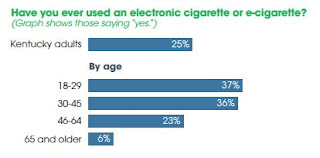 |
| Paul Prather (Photo from the Herald-Leader) |
But the pastor of Bethesda Church near Mount Sterling says nothing prepared him for the experience of taking care of his wife Renee as she struggled with cancer from 2000 to 2005.
"Caregiving is the hardest thing I’ve ever done. Nothing else comes close. Unless you’ve held that job, you have no idea how you’d fare," Prather wrote in his Sunday column in the Lexington Herald-Leader.
About 40 million Americans are caregivers, most of them unpaid, Prather notes. An American Association of Retired Persons study from 2015 estimates the economic impact of caregivers' work at $470 billion annually.
Prather used his own experiences, as well as a New York Times article by Dr. Dhruv Khullar and a Herald-Leader column by Robin Hamon, to offer advice to caregivers:
"You are not the only one. ... You’re one of 40 million." Whatever you're feeling is normal. He notes insight that a counselor once gave him: Emotions are neither good nor bad; they just are. Sometimes emotions jump from rage to fear to grief to numbness and everything in between, and that's OK, he says.
Don't beat yourself up. "You must be pretty decent or you wouldn’t be sacrificing your life for someone else," Prather writes. "Quit berating yourself for your shortcomings. Be merciful to yourself. Do your best on any given day, and leave it at that."
Remember to take care of yourself. Prather encourages caregivers to arrange for a sitter once or twice a week in order to have some time away. He also encourages healthy eating and exercise.
Ask for help. He suggests asking doctors for tips and seeking out information from books and websites.
Vent your frustrations. "You might not be able to talk candidly to the person you’re taking care of. But you might have a trusted sibling, friend, minister or adult child to whom you can speak honestly and safely," Prather writes.
Keep it in perspective. It's important to remember that this tough situation won't last forever, he says.
Prather also offers advice to those who know someone who is caring for a loved one:
"Look for the cracks," he notes. "When the sick person isn't within earshot, ask the caregiver is she's struggling."
Ask specifically what help is needed, but don't impose your agenda. Prather says most caregivers don't want to impose and will likely say, "Nothing," when asked what they need. Be specific with your questions, such as, "Would it help if I brought you a meal?" He warns, however, not to push what you think is needed onto the caregiver. Don't simply announce your plans to bring over a meal without asking.
Also, withhold judgment. "Never judge a caregiver for how she’s handling the situation," Prather writes. "Is she surly? Has she lost her faith? Is she praying that Mama will just go on and flipping die, like, today? Don’t delude yourself that you’d do better. God might let you find out."
Be a source of encouragement. Prather says that caregivers need to hear that they are doing a good job and that their work is noticed. Offer support and reassurance; it just might help him or her get through a rough day.
Caregivers can find additional resources through AARP here.























